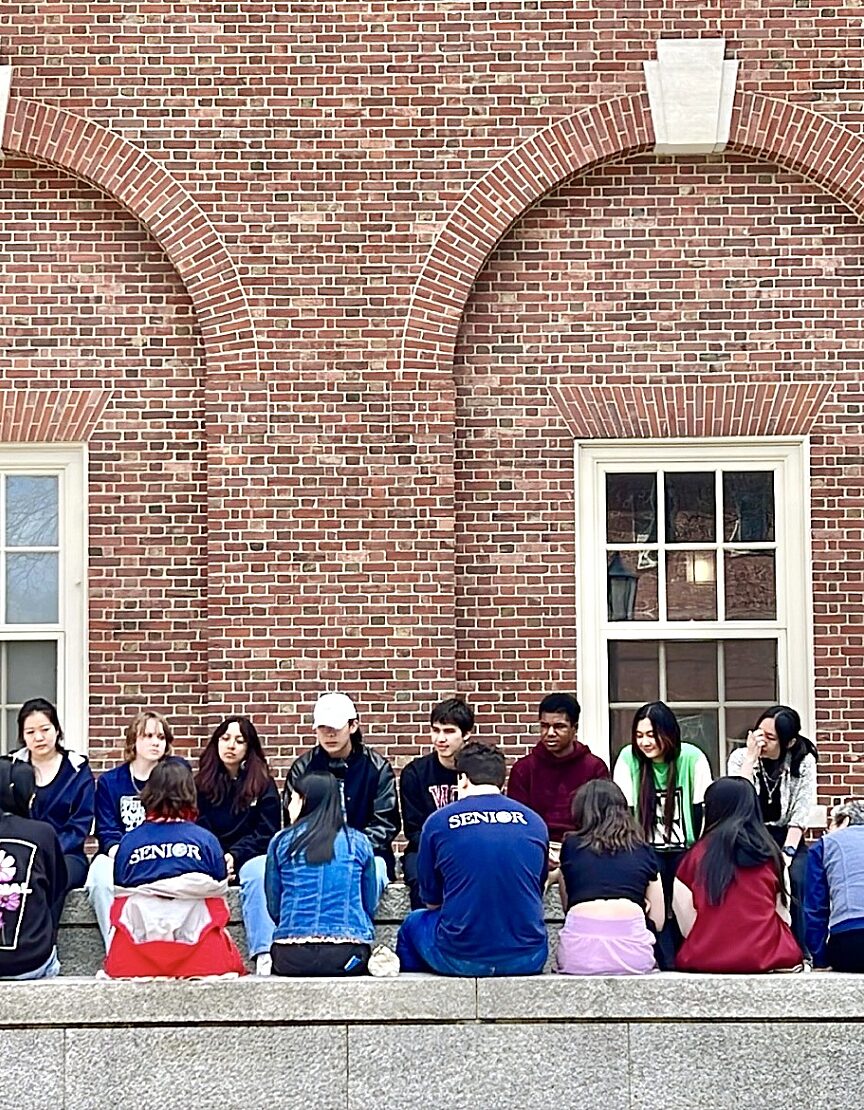
May 25, 2023
Improvisational Literature?
An exploration of cross-medium artistic expression and its effectivenessby Sebastian ’23
A student post from The Workshop 12*
As I dive deeper into The Workshop, my biggest priority remains pursuing interdisciplinary lines of study and combining multiple disciplines into one experience. In past courses, discussions, or even internet rabbit holes, I’ve always loved exploring topics or time periods through their art, specifically music. At first, considering our group’s focus on Jack Kerouac, a Beat generation author, I wasn’t certain this would be possible. Lucky enough for me, it turns out Kerouac harbored an obsession with jazz. Even further, he devoted much of his writing to attempting sound transfers of jazz elements to his literary endeavors. This past week, I’ve been asking myself: can two artistic mediums be effectively combined? Are the rules of one functionally transferable to the other?
I want to be considered a jazz poet blowing a long blues in an afternoon jam session on Sunday.
Kerouac kept his eyes glued to the bandstands of New York City jazz clubs night after night, taking inspiration from his idols (i.e. Dizzy Gillespie, Charlie Parker, Lester Young etc.) and basking in their unrestricted expression. Their improvised freedom motivated him to view his creative process as a piece of jazz music. He believed the best writing was spontaneous, mimicking, for example, the beautiful improvisation of a tenor saxophone over a jazz standard. Whatever came to mind would supposedly be his best thought.
The type of paper on which he wrote proved to be of equal importance. While he traveled around the North American continent, he would often write in small pocket notebooks. Their size and frequent page turns restricted his writing into verses that resembled stanzas of blues music. On the other hand, in writing On the Road, Kerouac wrote the entire novel on a single gigantic scroll of paper. This would give him all the expressive freedom he desires, being able to write for a significantly long time without needing to reset his paper.
The way I understand music, this concept of Kerouac’s spontaneous prose does not seem to me an applicable facet from jazz. In jazz tunes, there is a “chorus," the form of the piece defined by the predetermined sequence of chords. As the soloist improvises based on the chordal information and their own emotional expression, the rest of the band repeats this chorus structure again and again and again behind them. To me, the small notebooks most accurately marry jazz with literary art. One could play/write over the same chorus/page over and over while continuing to produce a new melody/story each and every time.
It does not help change my mind that Kerouac may not, in reality, have engaged in much spontaneous prose. While Zooming with Jean-Christophe Cloutier, a leading scholar of Jack Kerouac, we saw in some photographs of Kerouac’s notebooks that there were many symbols and asterisks directing the reader (or himself) from page to page and even from notebook to notebook. This was a means of justifying his spontaneous prose when he was in truth revising on the fly. If this defining aspect of his writing style was not truly practiced, then is combining musical improvisation and writing possible at all?
No matter mine or anyone’s opinion on the subject, one must admit that Kerouac’s attempts at musical literature are fascinating and certainly caught readers’ attention. To this day, Kerouac continues to be heavily associated with music. As I walked into the Cafe Nero next to our school, I saw a poster advertising The Town and The City Festival in Lowell this month. Named after his first novel, the festival celebrates Kerouac and his writing. And what else? You guessed it! Music.
The "(Re)creating Kerouac" group includes Claire ’23, Sebastian ’23, Izzy ’23 Marie ’23, and Esmé ’23.
__________________________________________________________________________
*THE WORKSHOP
Each spring term, The Workshop welcomes approximately 20 seniors to this interdisciplinary, project-based course. With an eye toward reimagining what school can be, The Workshop is the senior’s only academic commitment for the entire term. Instead of splitting their time and attention into units of distinct courses and fields of study, they work closely with peers, faculty, and community and global partners on a series of linked, interdisciplinary projects that revolve around a single theme. Within the theme Experiments in Education, students explore areas of personal interest.
During the first few weeks of the term, students are working on one of four faculty-led projects. We feature blog posts by students during this time.
- Inequality Visualized (led by Ellen Greenberg, instructor in Mathematics, Statistics, and Computer Science)
- Listening to the Buddhists in Our Backyard (led by Andy Housiaux, instructor in Philosophy and Religious Studies; director of the Tang Institute)
- With Liberty and Health for All: “Humanities for Public Health” (led by Corrie Martin, instructor in English)
- (Re)creating Kerouac: From Jean-Louis to Jack (led by Gene Hughes, instructor in French)
___________________________________________________________________________
The Tang Institute at Phillips Academy is a center for teaching, learning, and partnership. To learn more, follow us on Twitter and Instagram. Subscribe to our monthly newsletter, Notes on Learning.
